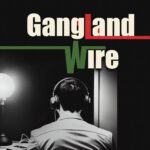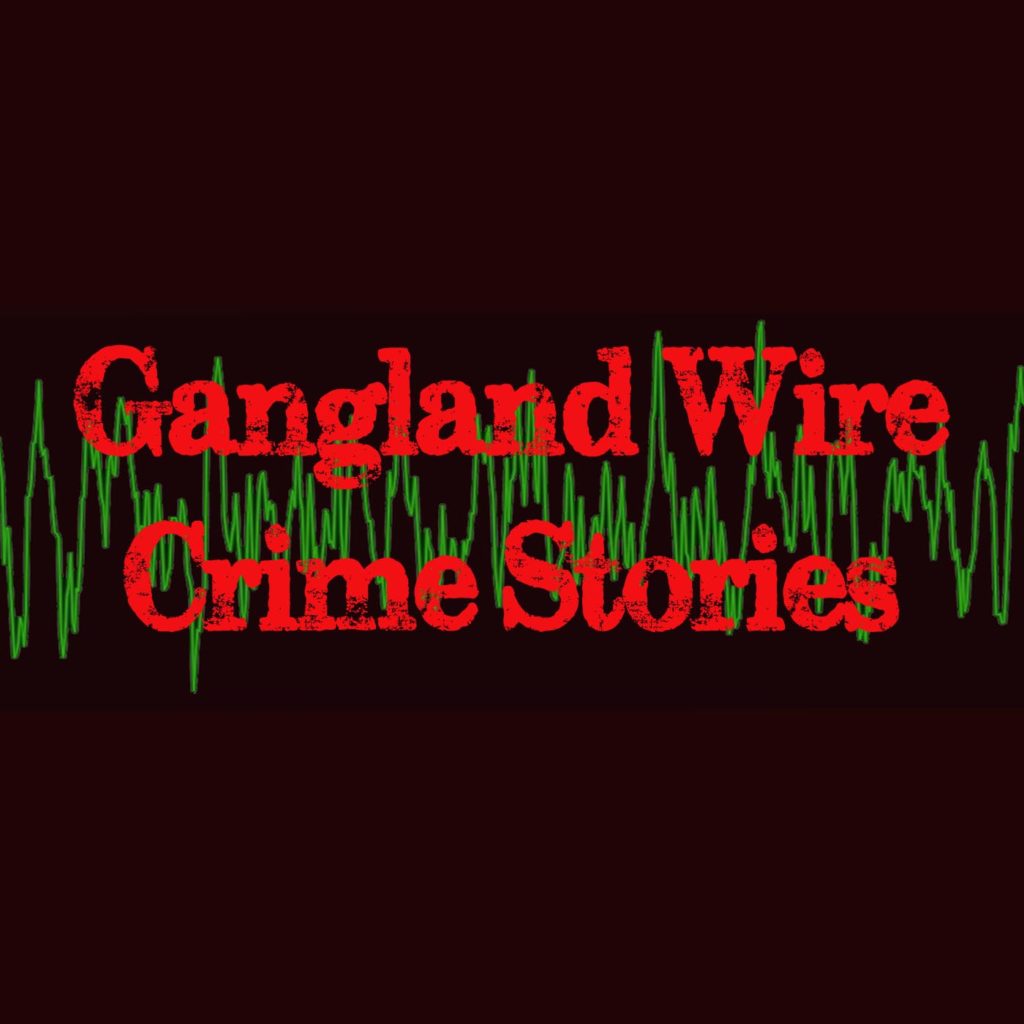Podcast: Play in new window | Download
Subscribe: Apple Podcasts | Android | RSS | More
In episode 1 of this 3-part series on the Mob and the Teamster’s Union, Gary and Cam discuss the early days of Jimmy Hoffa as he moves up in the Union making connections with mobsters and earning the respect of his fellow union members
The Mob and the Teamsters, Part I: Jimmy Hoffa and the Pension
Jimmy Hoffa (b.1913)
James Riddle Hoffa joined the International Brotherhood of Teamsters in the early 1930s. He made his way through the ranks from city to city making connections in each city. In Detroit, he was tied up with the Giacalone’s; in Chicago, Red Dorfman introduced him to Joey Glimco, and later Murray “Curly” Humphreys, Tony Accardo, and Paul Ricca. In New York, Hoffa met Johnny Dioguardi and Tony Provenzano; in New Orleans, he met Carlos Marcello. Hoffa knew how to use the mobs to exploit businesses. These associations earned him the support he needed for the nomination to Vice President of the Brotherhood under Dave Beck, but everyone knew who was the real power behind the throne.
A membership drive was Hoffa’s top priority. At this time, the Teamsters membership had just passed a million and was still on the rise. Unions were very competitive for membership at this time. The AFL-CIO had just merged in 1955, but the Teamsters were still very independent. Hoffa could use his mob connections to pound the union competition with Molotov cocktails and crowbars, but he needed to give workers a reason to want to be a Teamster.
The Pension
Hoffa combined many smaller work pensions from 22 states into the Central States, Southeast and Southwest Areas Pension Fund, or Central States for short. In doing so, Hoffa gained the trust and support of the membership. Members could now change employers without losing their pension. In the beginning, employers paid two dollars a month for each Teamster on their payroll, members could contribute as they saw fit. With membership heading towards two million, the fund very quickly had tens of millions.
Hoffa set up a board of trustees to help administer the pension. As part of a deal with the Chicago and Cleveland mobs, Red Dorfman’s son Allen, and Cleveland’s Bill Presser were members of the board, but the end of the day, Hoffa had total control. Allen Dorfman was made head of Union Casualty insurance company, while Bill Presser was the President of Cleveland’s 40,000 member Joint Council 41. The Cleveland connection would soon bear fruit.
The Teamster’s pension fund and Las Vegas
Moe Dalitz, a friend of Bill Presser from Cleveland and of Hoffa from his early Detroit time, suggested that a $4,000,000 loan could be used to help him build the Dunes Casino. Later, Dalitz himself received $1,000,000 to complete the construction of his Sunrise Hospital in his new town of Las Vegas.
Moe Dalitz and the Mayfield Road Jewish gangsters from Cleveland built the Desert Inn in Las Vegas in 1949, and were seeking social acceptance. A few years later, Hoffa would loan then another $8,000,000 to buy the Stardust Hotel and Casino. Hoffa loaned additional money to Dalitz for the Star Dust ($6,000,000) and the Freemont ($4,000,000). In 1963, when the Dunes changed ownership, Dalitz helped St. Louis figure Morris Shenker secure the millions he needed to maintain it.
Additional loans were made to Cesar’s Palace, the Landmark, Circus Circus, the Aladdin, and the Four Queens, basically creating the entire Vegas Strip. These loans gave the mob a presence in Vegas, with each family planting flags in various locations throughout the city. The Skim sent regular money to every mob family in the country.
By 1961, the Central States had lent over $91,000,000 in low interest (6%) loans. By 1963, 2/3 of the fund’s $200,000,000 assets were in real estate loans. Hoffa received a 10% commission on each loan. Allen Dorfman is said to have made approx. $3,000,000 in insurance commissions. Bill Presser used the pension to put all his friends and family into businesses ranging from bowling alleys to sports coliseums, and he took a piece of each business for himself just like the mob would also take 10% in cash off the top of whatever loan they were able to secure for businessmen.
McClellan Committee
Lucchese mobster and Hoffa supporter Johnny Dioguardi supported Jimmy’s candidacy with seven “paper locals”—Jimmy gave him 15 charters to create fake locals, which gave Johnny Dio 15 votes. Progressive journalist Victor Riesel wrote several articles denouncing Hoffa’s work with the pension, his run for union presidency, and Johnny Dio’s paper union corruption. A thug threw a jar of acid in Riesel’s face, permanently blinding him. The paper union scandal, the blinding, and the public feud between Hoffa and President Dave Beck opened the door for Senate investigation.
In 1957, Senator John McClellan began holding public hearings into the nature of corruption and organized labor, specifically, labor racketeering with Robert F. Kennedy as chief council. Kennedy felt that organized labor in general, and the Teamsters specifically, had become a corrupting force in the lives of the working class. Kennedy seemed to be personally offended that organized crime and organized labor had taken an interest in each other. Members of organized crime seemed to be offended that the son of their former partner, Joe Kennedy, the biggest bootlegger in the world, was now coming after them for supporting the working class he was no longer a part of. Hoffa was caught up in the middle.
The Hoffa Hearings occurred in August of 1957, a month before Jimmy would be elected President. Robert Kennedy badgered the witnesses, frequently losing his temper, calling them repeatedly despite knowing they would cite the Fifth Amendment. Later in 1959, the Senate held the investigations into organized crime figures. Kennedy continued to badger witnesses while getting NO information. Hoffa referred to Bobby as “Booby” Kennedy.
Besides labor law changes, the major outcome from the McClellan Committees was the overlapping images of Labor figures and Organized Crime figures being questioned together. There was absolutely corruption in organized labor, but because of these hearings, public opinion of organized labor began a downward trend. The unfortunate outcome is that people began to equate ALL organized labor with corruption.
Presidency
With the pension under his belt, membership on the rise, and the underworld certain they had their champion, Hoffa was elected President of the IBT in September 1957 in Florida. The new mob hierarchy revealed at Apalachin in 1957: Nick Civella, Raymond Patriarca, Carlo Gambino, Sam Giancana, Vito Genovese were the new breed and ready willing and able to go into labor union racketeering. Keep in mind, the IBT President wasn’t voted in through a general election. The Executive Board alone elected the President. The mobs controlled the board members, so Jimmy was elected.
With Hoffa’s help, mob bosses began to stack IBT locals with their own men—loyal to both Hoffa and their underworld bosses. Tony Provenzano, Genovese family capo was president of Teamsters 560 in Union City, NJ and a member of the Board of Executives, representing the New York families’ interest in the Pension; Chicago Outfit Union boss Joey Glimco was the President of Teamster Local 777 making close to $78,000 a month in pay-offs, and Allen Dorfman with Union Casualty and sitting on the Pension Board, was also an Executive, looked after Chicago concerns. Bill Presser in Cleveland was tied into Maishe Rockman and John Scalish’s family in Cleveland was also on the Executive Board. Kansas City had control Local 41 and Joint Council 56 with Roy Lee Williams, a tough-talking trucker respected by the rank and file, and was also on the Executive Board. Raymond Patriarca controlled International Vice President William McCarthy.
Hoffa did not value individuality. He wanted followers, not leaders. As his Secretary and eventual Vice President, he chose an old partner from Detroit, Frank Fitzsimmons. While the other members of the Executive board would all have to answer to the mob families that empowered them, Fitzsimmons would only be loyal to Hoffa. He was from Detroit, but his contacts were Jimmy’s contacts. Unfortunately, Jimmy treated him like an inferior, often yelling at him in public. As time would tell, the double-edged sword to Hoffa, was that Fitzsimmons always did what he was told.
Hoffa maintained control of the mob by holding the strings to the Pension, but he also protected the rank and file. Hoffa ran a tight ship; even with mobsters as shop stewards, treasurers, and presidents of Locals, He held the Union together with an iron fist. He held the mob off on the loans, turning down more loans than he approved.
Jimmy also refused to go along with the 1960 Election. Joseph Kennedy reached out to his mobster connections to help his son John become President of the United States. The mafia got on board and supported Kennedy—they told Jimmy to do the same. Hoffa remembered Bobby Kennedy and the McClellan Committee and gave $500,000 to Richard Nixon’s campaign.
Get Hoffa Squad
With the support of the nation’s Mafia (Chicago and New York), John Kennedy was elected in 1960. He named his brother, Robert Kennedy, as the Attorney General. Hoffa, having the better crystal ball, had donated $500,000 to Nixon’s campaign. Bobby Kennedy immediately went after Hoffa. In addition, Kennedy made it his personal mission to stop organized crime and its influence in the trucking industry. Bobby doggedly pursued Hoffa for jury-tampering, attempting to bribe a witness during the McClellan hearings, wire fraud, and misuse of pension.
Show Notes by Camillus Robinson
Support the Podcast
Hit me up on Venmo for a cup of coffee or a shot and a beer @ganglandwire
To go to the store or make a donation Click Here.
To rent Brothers against Brothers, the documentary, click here.
To rent Gangland Wire, the documentary, click here
To subscribe on iTunes click here, please give me a review and help others find the podcast


Was Jimmy Hoffa a Mob Member ? Or just worked with the Mob to build his Teamsters Empire?
He would not have been a member. He was a valuable associate who worked closely with various mob organizations. Thank you for your question.